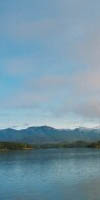 POLICY
STREAM REPORT POLICY
STREAM REPORTThe Resource The merchantable timber species found in the timber sale area located in the north coast region include Western hemlock, Western red cedar, amabilis fir, Sitka spruce, yellow cedar and cottonwood. These forests are very old with a large majority of the stands being over 280 years (North Coast LRMP Current Conditions Report 2001). All harvesting to date has been of old growth forest, with there being no experience in the district of harvesting second growth stands (North Coast LRMP Current Conditions Report 2001). As noted in the LRMP report, most of the harvesting occurs in low elevation forests in the Coastal Western Hemlock zone. In the isolated valleys, harvesting operations are most often accessed from the water, with licensees preferring to harvest small drainages in a single pass, harvesting both sides of the valleys to reduce the high costs of operating in these remote areas (North Coast LRMP Current Conditions Report 2001). The rugged terrain of this region further complicates the use of conventional logging practices. Because of this rugged terrain, most harvesting is done by hand felling trees and extracting them with the use of conventional (non-aerial) systems such as cable systems (83%) and helicopters (17%). However, by far the greatest proportion of harvesting occurs using clearcutting regimes (North Coast LRMP Current Conditions Report 2001). Select from the menu at the right or continue to The History of Forest Use |
Introduction
The Resource
History of Forest Use
Timber Allocation Process
Recent Changes in Forest Plan
Logging and Effects on Ecosystem
Emerging Alternatives
Dowload Entire Report
.pdf file (requires Adobe Acrobat)